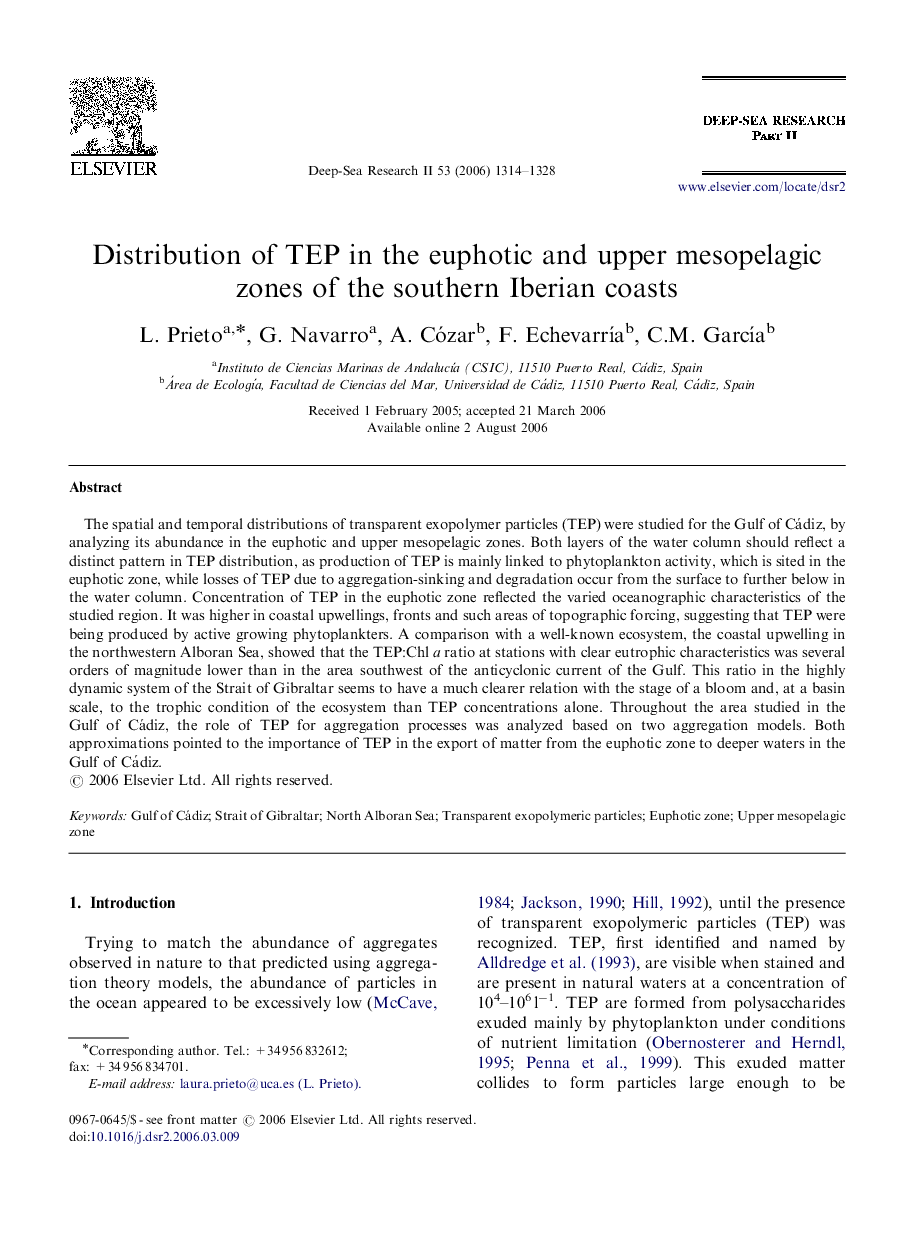| Article ID | Journal | Published Year | Pages | File Type |
|---|---|---|---|---|
| 4538296 | Deep Sea Research Part II: Topical Studies in Oceanography | 2006 | 15 Pages |
Abstract
The spatial and temporal distributions of transparent exopolymer particles (TEP) were studied for the Gulf of Cádiz, by analyzing its abundance in the euphotic and upper mesopelagic zones. Both layers of the water column should reflect a distinct pattern in TEP distribution, as production of TEP is mainly linked to phytoplankton activity, which is sited in the euphotic zone, while losses of TEP due to aggregation-sinking and degradation occur from the surface to further below in the water column. Concentration of TEP in the euphotic zone reflected the varied oceanographic characteristics of the studied region. It was higher in coastal upwellings, fronts and such areas of topographic forcing, suggesting that TEP were being produced by active growing phytoplankters. A comparison with a well-known ecosystem, the coastal upwelling in the northwestern Alboran Sea, showed that the TEP:Chl a ratio at stations with clear eutrophic characteristics was several orders of magnitude lower than in the area southwest of the anticyclonic current of the Gulf. This ratio in the highly dynamic system of the Strait of Gibraltar seems to have a much clearer relation with the stage of a bloom and, at a basin scale, to the trophic condition of the ecosystem than TEP concentrations alone. Throughout the area studied in the Gulf of Cádiz, the role of TEP for aggregation processes was analyzed based on two aggregation models. Both approximations pointed to the importance of TEP in the export of matter from the euphotic zone to deeper waters in the Gulf of Cádiz.
Related Topics
Physical Sciences and Engineering
Earth and Planetary Sciences
Geology
Authors
L. Prieto, G. Navarro, A. Cózar, F. EchevarrÃa, C.M. GarcÃa,
